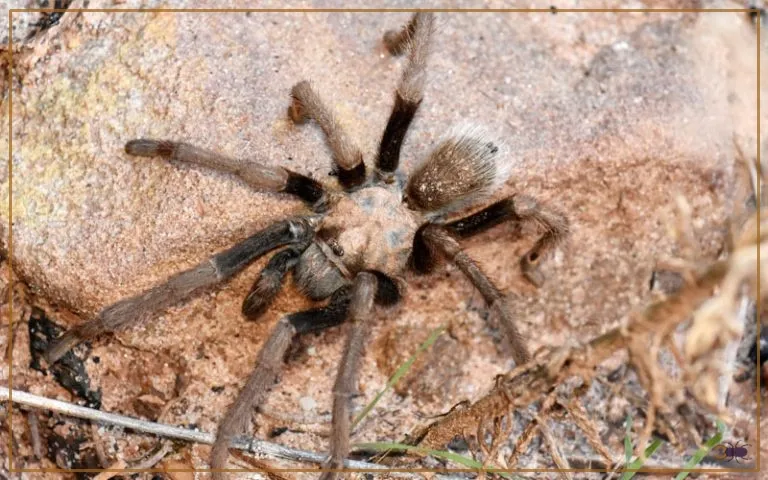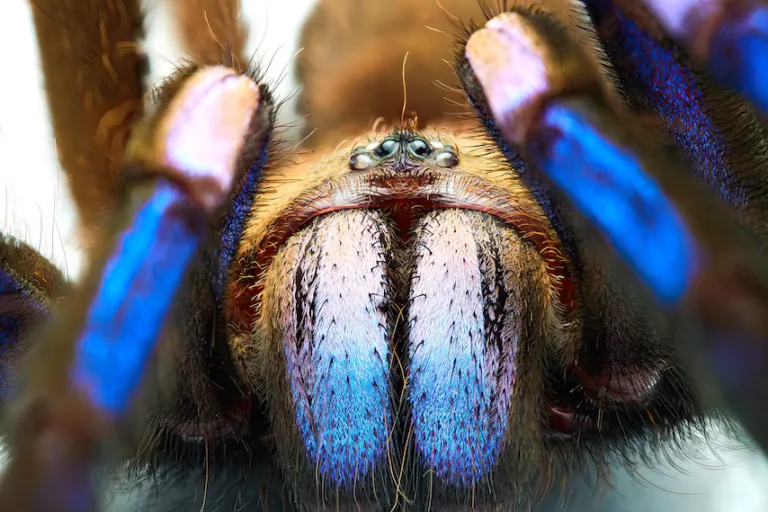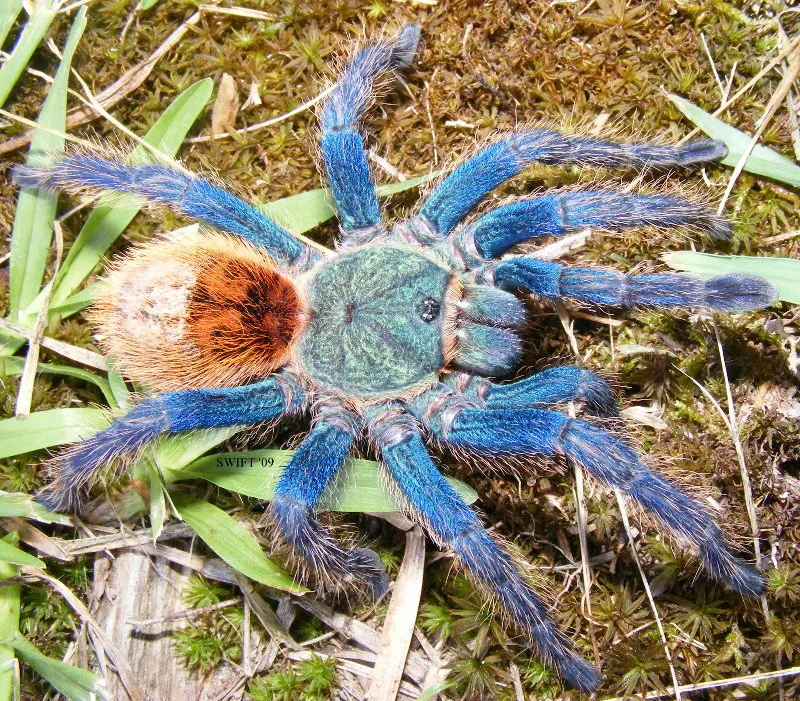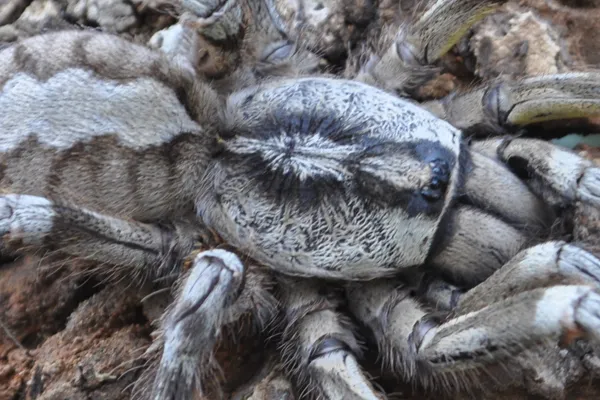Tarantulas, the large, hairy spiders that often evoke a mix of fascination and fear, are facing increasing threats in the wild. While many species are not currently classified as endangered, several factors contribute to the decline of certain tarantula populations. Understanding these threats and the conservation efforts underway is crucial for protecting these fascinating creatures. This article delves into the top 5 facts about endangered tarantulas, exploring the reasons behind their vulnerability and what can be done to help.
What Makes Tarantulas Endangered?
Several factors converge to put tarantula populations at risk. These threats often interact, exacerbating the challenges faced by these spiders. Habitat loss, driven by deforestation and development, is a primary concern. The unsustainable pet trade, where tarantulas are collected for sale, also significantly impacts wild populations. Climate change adds another layer of complexity, altering habitats and potentially disrupting tarantulas’ life cycles. Awareness of these threats is the first step in conservation.
Habitat Loss and Its Impact
Habitat loss is one of the most significant threats to tarantulas. As human activities expand, natural habitats are destroyed or fragmented. Tarantulas, often with specific habitat requirements, struggle to adapt to these changes. This destruction limits their access to food, shelter, and mates, reducing their chances of survival. The conversion of forests and grasslands into agricultural land, urban areas, or infrastructure projects directly removes or degrades the tarantula’s home.
Deforestation and Development

Deforestation, driven by logging, agriculture, and mining, is a major contributor to habitat loss. The removal of trees eliminates the shelter and food sources that tarantulas rely on. Development, including housing, roads, and commercial projects, further fragments and destroys habitats. This fragmentation isolates tarantula populations, making it difficult for them to interbreed and maintain genetic diversity, increasing their vulnerability to environmental changes and diseases. The loss of habitat directly reduces the area available for tarantulas to live and reproduce.
Climate Change and its Effects
Climate change presents another significant challenge. Rising temperatures, altered precipitation patterns, and more frequent extreme weather events can disrupt tarantula habitats. Changes in temperature can affect the spiders’ metabolism, growth, and reproduction. Altered rainfall patterns can impact the availability of food and water, and extreme weather events, such as droughts and floods, can directly kill tarantulas or destroy their habitats. The long-term effects of climate change on tarantula populations are still being studied, but the potential for significant impact is clear.
The Role of the Pet Trade
The pet trade poses a substantial threat to many tarantula species. The demand for exotic pets drives the collection of tarantulas from the wild. Although some tarantulas are bred in captivity, wild-caught individuals are often preferred due to their perceived novelty and unique characteristics. This demand can lead to unsustainable harvesting practices, depleting wild populations and disrupting ecosystems. The capture and sale of tarantulas also often involve poor handling and transportation conditions, which can result in significant mortality.
Over-Collection for the Pet Market

The over-collection of tarantulas for the pet market is a major factor contributing to their endangerment. High demand, especially for rare or colorful species, incentivizes collectors to seek out and capture tarantulas from their natural habitats. This over-collection can quickly deplete populations, especially in localized areas. Without regulations and enforcement to manage the trade, vulnerable species are at risk of severe decline, leading to genetic bottlenecks and reduced resilience to environmental changes.
Unsustainable Harvesting Practices
Unsustainable harvesting practices exacerbate the threats posed by the pet trade. Collectors often fail to adhere to ethical or conservation-minded guidelines. These practices may involve indiscriminate capture methods that harm tarantulas, damage their habitats, or target breeding females. The lack of regulations, or the ineffective enforcement of existing ones, further contributes to unsustainable harvesting. Such practices deplete populations without allowing them to recover, endangering the long-term survival of the species.
Specific Endangered Tarantula Species
While many tarantula species are not yet classified as endangered, several are facing significant threats and have become the focus of conservation efforts. These species often have restricted ranges or are particularly vulnerable to habitat loss and collection. Recognizing and protecting these specific tarantulas is critical for biodiversity conservation, helping to safeguard unique genetic traits and maintaining ecological balance. These are few examples.
The Goliath Birdeater

The Goliath Birdeater (Theraphosa blondi), one of the largest tarantulas in the world, faces threats from habitat loss and the pet trade. Although not currently listed as endangered, its populations are declining in some areas due to deforestation and collection. The Goliath Birdeater’s large size and impressive appearance make it a popular target for collectors. Conservation efforts focus on monitoring populations, protecting their habitats, and educating the public about the importance of this species. The loss of the Goliath Birdeater would impact the ecosystems they live in.
The Trinidad Chevron Tarantula
The Trinidad Chevron Tarantula (Psalmopoeus ecclesiasticus) is a species found in Trinidad and Tobago that is of significant conservation concern. Habitat destruction, due to urbanization and agricultural expansion, is one of the main threats. Additionally, they are popular in the pet trade, leading to over collection. This species faces threats that require urgent conservation action, including habitat preservation and measures to regulate the pet trade. The Trinidad Chevron Tarantula highlights the need to focus on species with restricted ranges.
Conservation Efforts and Solutions
Protecting endangered tarantulas requires a multi-faceted approach. Conservation efforts often involve habitat protection, captive breeding programs, and public education. Collaboration between governments, conservation organizations, and local communities is crucial for the success of these initiatives. These efforts aim to address the key threats to tarantulas, such as habitat loss and the pet trade, ensuring that these fascinating spiders can thrive for generations to come.
Protected Areas and Reserves

Establishing and maintaining protected areas and reserves is essential for tarantula conservation. These protected areas provide safe havens for tarantulas, safeguarding them from habitat loss and other threats. Effective management of reserves includes monitoring tarantula populations, controlling illegal activities such as poaching, and restoring degraded habitats. Collaboration with local communities is vital to the long-term success of protected areas, ensuring sustainable practices and community support.
Captive Breeding Programs
Captive breeding programs play a crucial role in tarantula conservation. By breeding tarantulas in captivity, conservationists can increase populations and reduce the pressure on wild tarantula populations. These programs also provide an opportunity to study tarantula biology, behavior, and conservation needs. Careful planning and management of captive breeding programs are essential to ensure that the released tarantulas are genetically diverse and adapted to their natural habitats. These programs contribute to the survival of vulnerable species.
Education and Awareness
Raising public awareness about tarantulas and the threats they face is a critical component of conservation efforts. Education programs can inform people about the importance of tarantulas, their role in ecosystems, and the threats to their survival. Awareness campaigns can promote responsible pet ownership, encourage support for conservation initiatives, and inspire the next generation of conservationists. Public support is essential for successful long-term conservation.
How You Can Help Protect Tarantulas

Everyone can contribute to tarantula conservation. You can support organizations that work to protect tarantulas and their habitats. If you are interested in owning a tarantula, ensure you purchase captive-bred specimens from reputable breeders. Educate yourself and others about the importance of tarantulas. By taking these steps, you can help conserve these amazing arachnids. Your actions will help them for many generations to come.
- Support conservation organizations
- Purchase captive-bred tarantulas
- Educate yourself and others
- Reduce your environmental impact
In conclusion, the world of tarantulas is fascinating, and some species face significant threats. Understanding the factors contributing to their endangerment, such as habitat loss, the pet trade, and climate change, is crucial for effective conservation. By supporting conservation efforts, promoting responsible pet ownership, and raising awareness, we can help protect these remarkable creatures and ensure that they thrive for many years to come.
